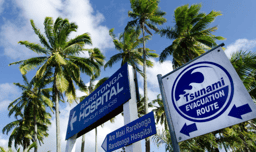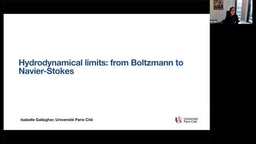In The Ocean World, Jacques-Yves Cousteau wrote
From the vast expanses of its surface waters to its beaches and marshes and tidelands and mangrove swamps, from its many thousands of miles of rocky shores to its deepest and darkest abyss, the sea produces life in fantastic abundance.
Cousteau’s aquatic adventures ran through my mind when I ate lunch after Professor William Fenical’s talk this morning. He was awarded the “”http://oasys2.confex.com/acs/231nm/techprogram/P926624.HTM">Guenther Award in the Chemistry of Natural Products" and spoke about marine actinomycetes, microorganisms whose terrestrial cousins produce a number of natural products, including streptomycin and actinomycin.
Fenical thought that microorganisms capable of producing interesting, biologically-active natural products lived in the ocean. To find these microbes, his research group constructed new devices to collect samples from the deep sea: the “mud snapper” (200 meters deep), electric reels (1500 meters deep), and an autonomous sampling device that looked like a cross between a syringe and a pogo stick (6000 meters deep). He showed a movie of this last device: it sinks to the bottom of the ocean and the tip of the device plunges into the sediment and collects a soil sample. Then it releases its weights and shoots back up to the surface, where the samples can be retrieved and brought back to the lab.
A few years ago, his research group reported the discovery of a new marine actinomycetes (Salinospora), which produced salinosporamide A, a natural product with a fused gamma-lactam-beta-lactone bicyclic ring structure. They showed that in vitro, this compound was highly potent against a number of cancer cell lines.
Chauhan et al. recently published a Cancer Cell paper where they showed that this compound (renamed NPI-0052) was orally bioavailable and that it prolonged survival in animal tumor model studies. For these reasons, salinosporamide A/NPI-0052 is now scheduled to enter human clinical trials in the late spring or early summer.
In a Chemical & Engineering News article written earlier this year, Fenical said
Oceans not only cover more than 70% of Earth’s surface, but more than 90% of the organisms in the ocean are not found on land … In one cubic centimeter of bottom sediment, there are 1 billion microbial organisms. There is a huge diversity of microscopic organisms [that may produce] potent, biologically active metabolites of unique, unprecedented structures.
Fenical’s research group has identified and cultured 15 new marine phylotypes so far – including Salinispora pacifica, which was reported in a recent issue of Organic Letters and produces cyanosporasides A and B. This is only a fraction of what’s out there, but it looks like Fenical’s research group is off to a good start…
Joshua
Joshua Finkelstein (Associate Editor, Nature)





Please sign in or register for FREE
If you are a registered user on Research Communities by Springer Nature, please sign in